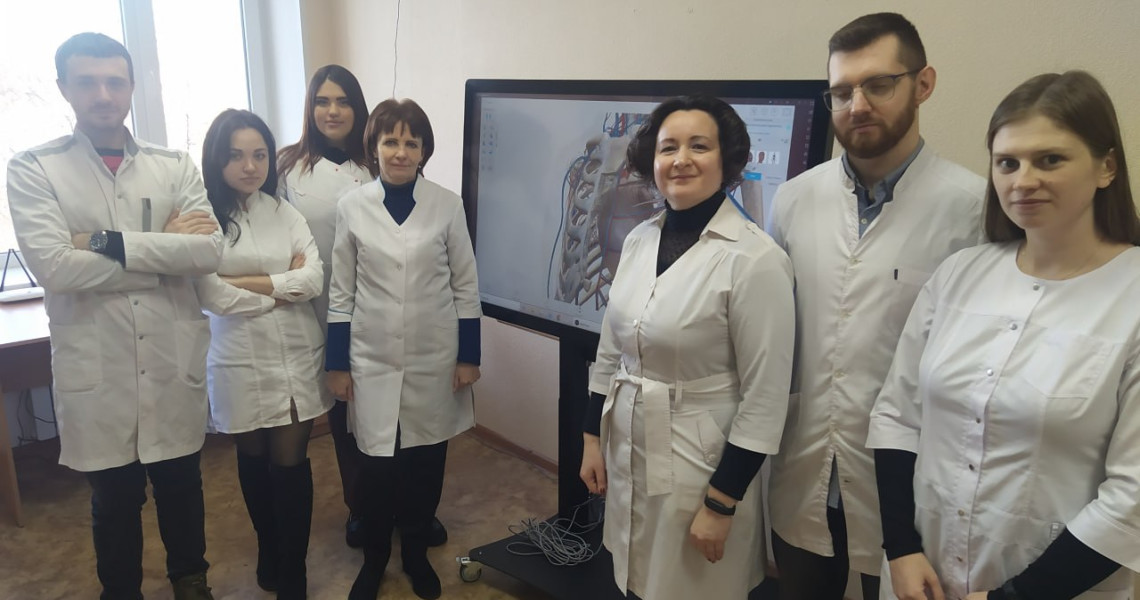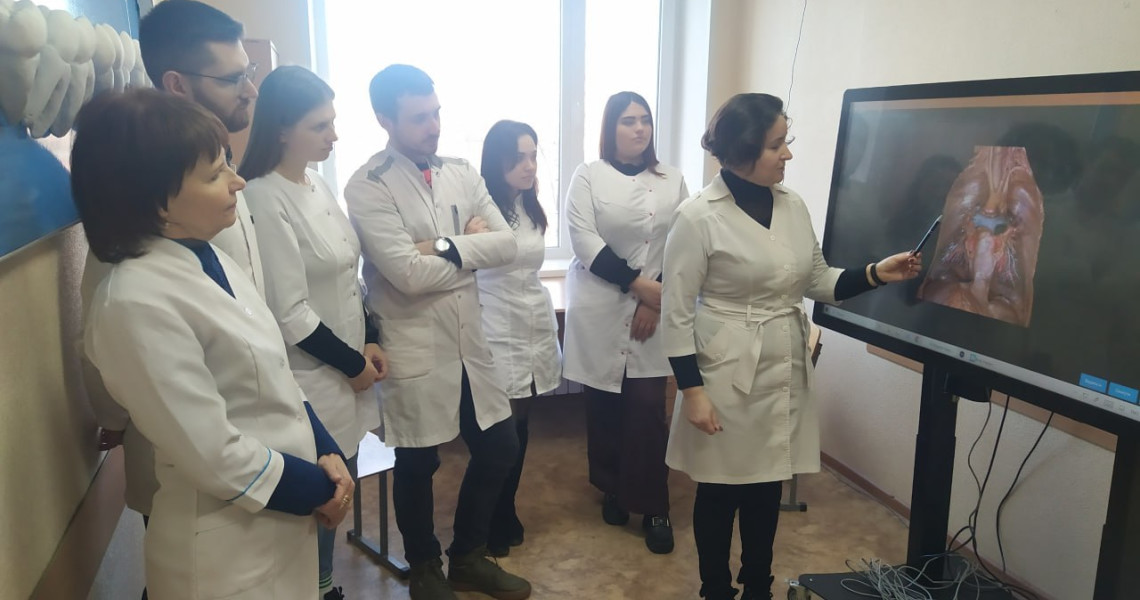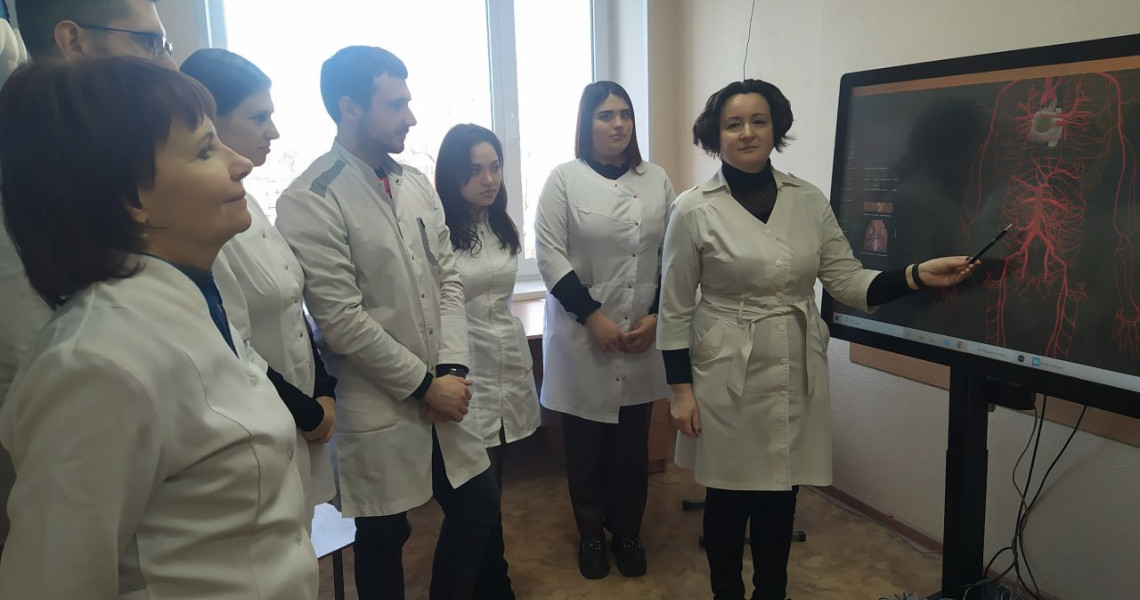18 грудня 2024 року доцент кафедри анатомії людини Свінцицька Наталія та доцент кафедри внутрішніх хвороб та медицини невідкладних станів ЗВО ПДМУ Люлька Надія провели бінарне заняття на тему «Анатомія, топографія, васкуляризація та лімфовідтік органів грудної порожнини» для лікарів-інтернів першого року навчання за фахом «Внутрішні хвороби». Заняття пройшло у формі інтерактивного навчання з використанням практично-наочних можливостей мобільного мультимедійного комплексу «ОНІКО». Лікарі-інтерни мали змогу оновити набуті теоретичні знання з анатомії серцево-судинної системи, розглянути тривимірну структурну організацію клапанного апарату серця, особливості рельєфу внутрішньої будови порожнин серця, топографію магістральних судин грудної порожнини. Розглянуті питання мають актуальне і практично-прикладне значення для лікарів.
Interactive Learning with the Practical and Visual Capabilities of the "ONIKO" Mobile Multimedia Complex: Discover More
On December 18, 2024, Associate Professor Nataliia Svintsitska from the Department of Human Anatomy and Associate Professor Nadiia Liulka from the Department of Internal and Emergency Medicine at PSMU conducted a joint session on the topic "Anatomy, Topography, Vascularization, and Lymphatic Drainage of Thoracic Organs". The session was organized for first-year medical interns specializing in "Internal Medicine." The lesson utilized an interactive learning format, leveraging the practical and visual capabilities of the "ONIKO" mobile multimedia complex. Medical interns had the opportunity to refresh their theoretical knowledge of the anatomy of the cardiovascular system, explore the three-dimensional structural organization of the heart's valvular apparatus, examine the detailed internal structure of the heart chambers, and study the topography of the thoracic cavity's major vessels. The topics covered were not only relevant but also of significant practical importance for medical professionals.








